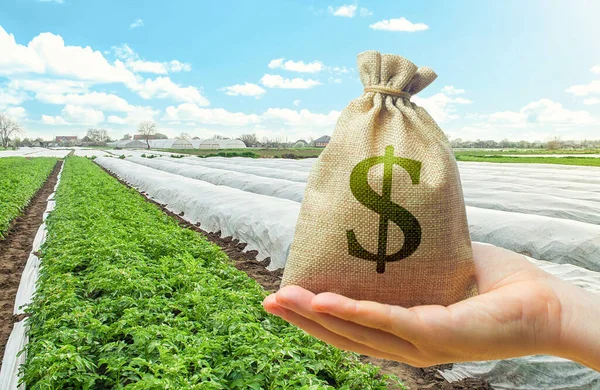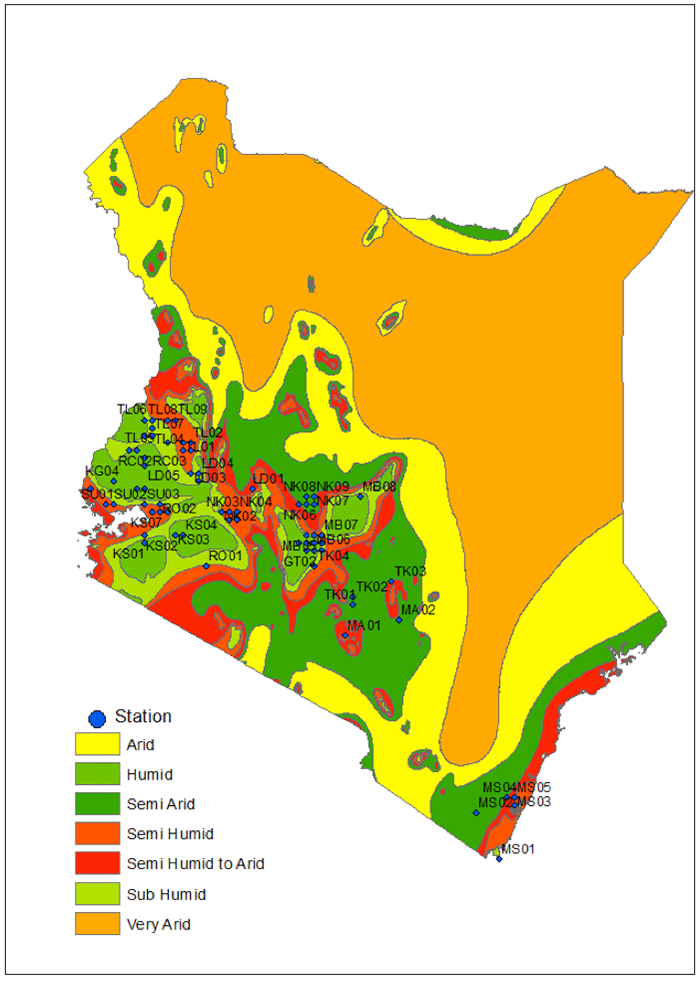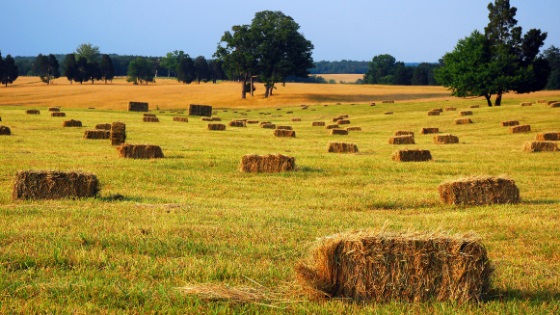Did you know that only 36–40 % of small‑scale Kenyan farmers have access to formal agricultural credit? For the majority, agriculture financing still comes from personal savings, relatives, or costly informal lenders. This lack of cheap farm loans is a systemic barrier that keeps most farmers trapped in subsistence production. Women and youth are hit especially hard. with reports showing they only get around 10 % only of the available credit.
In this guide, you’ll learn how to apply for a loan successfully. The step‑by‑step guide will help you to apply for a farming loan successfully. How to evaluate the best types of collateral for farmers such as (land, livestock, equipment, warehouse receipts). will also show you how to leverage digital lending platforms. It also includes practical risk‑management tactics—like record‑keeping, crop insurance, diversified income, and realistic repayment schedules—to help you repay loans quickly and build a strong credit history
Why Agricultural Farming Loans Are Different
Seasonal cash flow means lenders need flexibility
Agriculture operations are very seasonal with unpredictable cashflows. You will spend heavily at planting period in seeds, fertilizer, labor with no income for months. During the growing season more cash goes out for weeding, pest control and irrigation. Only at harvest does revenue arrive, often in a single lump.
Traditional monthly‑payment loans assume steady cash flow and therefore struggle to fit these cycles. Instead, farmers need financing with repayment schedules tailored to cropping seasons and commodity sales.
- Tip: As a farmer keep your farm records and chart your yearly expenses and income. When you can demonstrate predictable seasonal patterns over multiple years, your farming operation becomes more bankable. Lenders favor borrowers who can show when cash will flow in and out.
Your assets aren’t like those of a shop owner
Do you know that knowing how to value and document your assets can unlock better loan terms? while a traders inventory depreciates quickly your farm land tends to appreciate as soil is improved and infrastructure is added.
Livestock literally multiplies itself over time, while stored grain retains market value or may even rise if prices increase. In some cases your growing crops can serve as collateral through warehouse receipt systems. According to research, only less than 10 % of borrowers use land as collateral in Kenya. This shows you can tap into other assets for loan application.
Technology is reshaping risk assessment
More than 15 % of Kenyan farmers who were denied loans lack records or credit history. Don’t let record‑keeping be the reason your application stalls.
As a farmer you can embrace digital record‑keeping, mobile money receipts and geotagged photos can provide lenders with transparent information. Your lender can also use satellite imagery to verify acreage, rainfall data to gauge climate risk and market prices to estimate income.
Informal versus formal Farming Loans
According to Financial Access surveys, informal sources such as shopkeepers, friends, chamas provide the bulk of agriculture financing. Those loans are quick but small (often under KShs 10,000), short‑term and expensive. On the other hand, digital loans deliver money via phone but can charge annualized rates above 100 %.
Formal lenders such as SACCOs and banks offer larger amounts with longer repayment periods and lower interest, but they require collateral and documentation. Understanding these options helps you decide where to apply and how to negotiate.
How to make a Formal Farming Loan Application
Think of your loan request as a business pitch. You aren’t begging for help; you’re demonstrating that investing in your farm is profitable for both you and the lender. Use the following Five‑Step Application Framework to cover all the bases.
1. Present your agricultural business profile
Write a short narrative (one to two pages) that answers:
- Who are you? Summarize your farming experience, education and training. Mention farmer groups or cooperatives you belong to and any certifications.
- What do you produce? List crops and livestock, acreage, typical yields and markets served.
- What’s your track record? Highlight successful seasons, especially if you’ve repaid smaller loans or used savings to expand.
This section convinces lenders that you’re not just a hobbyist but a professional farmer with marketable products and locked buyers.
2. Compile clear financial records
Farmers are often turned down because lenders cannot verify their income or expenses. Compile at least three years of records showing:
- Input purchases: Receipts for seed, fertilizer, livestock feed, hired labor and equipment rental.
- Production costs: Machinery maintenance, fuel, veterinary expenses.
- Harvest volumes and sales: Contracts or receipts from buyers, warehouse receipts if you store grain, milk sales records.
- Other income streams: Off‑farm work or remittances.
You don’t need complex accounting software. A simple spreadsheet or notebook with dates, amounts and descriptions is fine as long as it’s accurate. The FinAccess study notes that one of the top reasons for loan denials is “no records or credit history”
3. Show you know your market and production plan
Lenders want assurance that you will sell what you produce. Include in your plan the following details:
- Buyer details: Who purchases your crops or livestock? Are there contracts or verbal agreements?
- Price trends: What are typical farm‑gate prices during different months? How do you hedge against price drops?
- Yield projections: Use past yields to forecast output. For new enterprises, base projections on data from extension services or research institutions.
4. Detail how you will use the funds
Break down your capital needs by category. Avoid round numbers like “100,000 KES for inputs”. Instead, specify: 15 bags of seed at 4,000 KES each; 25 bags of fertilizer at 3,200 KES; labour for 90 days at 500 KES/day; two heifers at 50,000 KES each. When lenders see you have done your homework, they feel confident the loan amount matches your business plan.
5. Align repayment with your cash flow
Propose a repayment schedule that fits your seasonal income. For annual crops, suggest bullet payments after harvest. Dairy or poultry operations with monthly sales might justify monthly or quarterly installments. Include contingency plans: crop insurance policies, off‑farm income or diversified enterprises that can buffer bad seasons. Lenders know agriculture is risky; showing how you manage those risks sets you apart.
6. Compare Loan Offers Before You Commit
Most farmers make the mistake of rushing into the first loan they qualify for. But just like comparing seed varieties before planting, shopping for the right loan can save you money and headaches down the road.
1. Understand the cost of borrowing
- Simple interest: Best for short-term or seasonal loans. For example, if you borrow KSh 100,000 at 10% simple interest for one season, you only pay back KSh 110,000 regardless of timing.
- Compound interest: Adds interest on top of unpaid balances. That same KSh 100,000 at 10% compounded monthly can balloon to KSh 112,000+ or more by harvest time. Farmers who don’t understand this often pay thousands extra unknowingly.
2. Look at the full APR, not just “interest rate”
The Annual Percentage Rate (APR) includes hidden costs like loan processing fees, mandatory insurance, appraisal charges, and penalties. A “cheap” loan at 9% may actually cost more than one at 12% once extras are added.
3. Evaluate the lender, not just the loan
- Reputation & history: Has the bank or SACCO been consistent in supporting farmers? Check reviews, talk to other farmers, and see if the lender has a strong agricultural desk.
- Customer service: Delayed disbursements during planting season can ruin your cycle — choose a lender known for timely releases.
4. Look for special products tailored to farmers
Some institutions now design loans around agriculture’s unique risks:
- Green loans (e.g., RKFINFA’s Climate-Smart Green Loan) offer better rates for eco-friendly farming investments.
- Youth & women agribusiness loans come with relaxed collateral requirements.
- Digital microloans via mobile platforms are fast but require discipline to avoid rolling debts.
Bottom line: Don’t just ask “How much can I borrow?” — ask “How much will this loan really cost me, and is this the best partner for my farm?”
7. Know Your Consumer Rights
Securing a loan is only half the journey. Protecting yourself as a borrower is equally important. Kenya’s financial laws and regulators ,including the Central Bank of Kenya (CBK) and SASRA for SACCOs ,exist to ensure fair treatment.
1. Demand transparency
A lender must disclose all loan charges upfront. Ask for a written contract showing interest, fees, and repayment schedule. Never rely on verbal agreements.
2. Watch out for hidden costs
Some lenders slip in monitoring fees, mandatory insurance, or unexplained penalties. If a loan feels unclear, push for answers or walk away.
3. Avoid predatory lenders
Unlicensed moneylenders often target farmers with “quick cash” at exploitative rates. Always verify that your lender is licensed by CBK or SASRA.
4. Know your right to complain
If a lender treats you unfairly e.g., sudden interest hikes, illegal asset seizures you can file complaints with:
- The Central Bank of Kenya (for banks, microfinance institutions).
- SASRA (for SACCOs).
- County-based financial consumer protection offices.
5. Keep your own records
Document every repayment with receipts or mobile money confirmations. This protects you from wrongful claims and strengthens your case in disputes.
Bottom line: A fair loan is your right, not a privilege. By knowing the law and keeping thorough records, you protect your farm and your family’s financial future.
Choosing Your loan Security
Securing a loan for your farming venture doesn’t always require a land title. Kenyan lenders increasingly recognize alternative collateral that reflects the realities of agricultural business.
Your livestock can serve as security through chattel mortgages, where cattle, goats, or poultry are valued and registered. Farm equipment like tractors, irrigation systems, and processing machinery also qualify as collateral.
Some financial institutions accept warehouse receipts for stored produce, allowing you to borrow against your harvest while waiting for better market prices. Future crop yields can be pledged through contract farming arrangements, where off-takers guarantee purchase and lenders feel secure. Even leasehold agreements on land you don’t own outright can work if properly documented.
Group guarantees through cooperatives or SACCOs provide another avenue, where members collectively secure each other’s loans. The key is proper documentation and working with lenders who understand agricultural cycles and asset types beyond traditional property titles.
Exploring Digital Agricultural Finance Platforms
Kenya has become a laboratory for mobile money and digital lending. M‑Pesa, M‑Shwari, Fuliza and numerous apps offer instant credit to farmers. These platforms score borrowers using phone data, mobile money transactions and sometimes satellite imagery.
Pros
- Speed: Loans are approved within minutes, perfect for emergency purchases.
- Accessibility: You don’t need a bank account; your phone number is your identity.
- Low entry barrier: Small amounts help first‑time borrowers build a credit history.
Cons
- High cost: Some digital loans charge annualized interest rates above 100 %.
- Short tenure: Many loans must be repaid within a month or two. Late payments accrue hefty fees and can lock you out of future borrowing.
- Risk of over‑indebtedness: Farmers often juggle multiple informal and mobile loans. Among those who borrow from mobile money lenders, 75 % have more than one loan outstanding.
Best use case: Use digital loans for bridging gaps — fixing a broken pump or purchasing emergency pesticides — not as your main source of working capital. Keep a record of all mobile loans to avoid over‑borrowing.
Investment and Growth Capital
Beyond seasonal operating loans, you may need larger amounts to expand acreage, purchase machinery or diversify into value addition. Here are options:
- Savings and Credit Cooperatives (SACCOs): Member‑owned institutions that understand agriculture. They offer relatively low interest and flexible terms but usually require savings contributions and group guarantees.
- Microfinance institutions (MFIs): Provide credit to smallholders without traditional collateral, often through group lending. Interest rates can be higher than banks but lower than informal sources.
- Development programs and government schemes: Check programmes like Kenya’s Agricultural Finance Corporation (AFC), Women Enterprise Fund and youth development funds. They sometimes offer subsidized rates or guarantees for high‑impact projects.
- Impact investors and agricultural funds: These investors finance farmer groups or agribusinesses that demonstrate social or environmental impact. Requirements are rigorous, but if your enterprise is innovative (e.g., solar irrigation or climate‑smart storage), you may qualify.
Risk Management and Financial Planning
Farming involves weather, pests, price swings and market disruptions. Lenders worry about these risks as much as you do. Show them you have a plan:
- Diversify income: Combine crops with different harvesting periods; add livestock or agro‑processing. This stabilizes cash flow and reduces the chance of total failure.
- Use insurance: Weather‑index or multi‑peril crop insurance is still emerging in Kenya, but coverage is expanding. Insured farmers find it easier to obtain credit.
- Adopt climate‑smart practices: Drip irrigation, drought‑tolerant varieties and conservation agriculture reduce climate risks. Provide evidence of these practices in your loan proposal.
- Maintain an emergency fund: Even small savings provide breathing room when markets collapse or pests strike.
Navigating Regulations and Policy
Kenya’s financial landscape is evolving. Recent reforms include the Movable Property Security Rights Act and the Warehouse Receipt System Act, which allow borrowers to pledge movable assets and stored crops as collateral. The government also operates a Credit Guarantee Scheme to encourage banks to lend to small and medium enterprises, including farmers. Stay informed about such policies; they can widen your financing options.
Building Long‑Term Lending Relationships
Start small and prove yourself
If you’ve never borrowed formally, begin with a modest loan through a SACCO or microfinance institution. Repay on time and build a track record. In the FinAccess survey, only 9 % of farmers even attempted to borrow and were denied, partly because many self‑select out of applying. Don’t be discouraged by small beginnings; each successful repayment increases your borrowing capacity.
Communicate openly with lenders
Update your lender on progress. If pests ravage your beans or drought cuts yields, inform them promptly. Most lenders prefer restructuring payments over chasing defaults. Transparency builds trust.
Plan for growth
As your operation expands, your financing needs will evolve. Keep professional records, maintain assets and understand your leverage options. Over time, you can graduate from small SACCO loans to bank term loans or investment capital for processing, irrigation or greenhouse construction.
Frequently Asked Questions (FAQs)
Q1. Can small‑scale farmers in Kenya get formal agricultural loans?
Yes. Although only 36–40 % of small-scale farmers currently access formal credit, those who prepare professional applications and join SACCOs or co‑operative societies improve their chances. Start with small loans, maintain records and use group guarantees to build a track record.
Q2. What documents do I need for an agricultural loan application?
You should have:
- Identification (ID or passport) and PIN certificate.
- Proof of land ownership or lease agreements (if using land as collateral).
- Business profile outlining your farming experience and enterprise.
- Financial records of input purchases, sales and expenses for at least three years.
- Bank or mobile money statements to verify cash flow.
- A detailed budget showing how loan funds will be used and repayment plan.
Accurate, simple records are often more valuable than fancy accounting systems. Lenders deny many farmers because they lack these basics.
Q3. Can crops or livestock be used as collateral?
Yes. Under Kenya’s Movable Property Security Rights Act and warehouse receipt regulations, you can pledge livestock, equipment, or stored crops. To do so, you must provide valuations, records and, for livestock, health certificates. Growing crops can also serve as collateral if you participate in warehouse receipt programs or have insurance.
Q4. Are digital loans a good option for farmers?
Digital lenders like M‑Shwari and Tala offer speed and convenience, but they should be used cautiously. Interest rates can exceed 100 % per year, and repayment periods are short. Use them for emergency expenses, not for full‑season financing. Always read terms carefully and avoid juggling multiple loans, as many borrowers do.
Q5. What should I do if my loan application is rejected?
Ask the lender for feedback — many farmers are denied due to missing records, insufficient collateral or existing debts. Work on those gaps: join a SACCO to build saving history, keep better records or start with smaller amounts through group lending. You can also explore training offered by agricultural extension services or NGOs on financial literacy and business planning.
Conclusion: Take Control of Your Financing Future
Access to capital is not a privilege reserved for an elite few. It is a learnable skill that any committed farmer can master. Start by acknowledging the reality: only a minority of Kenyan farmers secure formal credit while most rely on small, expensive informal loans. Use this guide to understand why agricultural lending is unique, organize your business records, value your assets and craft compelling loan applications.
Remember, building a financial foundation takes time. Begin with small successes, communicate openly with lenders and embrace modern tools like digital record‑keeping and crop insurance. As your credibility grows, so will your access to capital — enabling you to invest in irrigation, mechanization, diversification and value addition. In doing so, you’ll transform your farm from a survival‑focused enterprise into a thriving, professionally managed business, joining the ranks of farmers who secure the credit they need to prosper.
Read More



